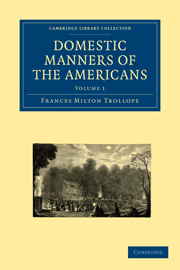Summary
As we advanced towards Baltimore the look of cultivation increased, the fences wore an air of greater neatness, the houses began to look like the abodes of competence and comfort, and we were consoled for the loss of the beautiful mountains by knowing that we were approaching the Atlantic.
From the time of quitting the Ohio river, though, unquestionably, it merits its title of “the beautiful,” especially when compared with the dreary Mississippi, I strongly felt the truth of an observation I remembered to have heard in England, that little rivers were more beautiful than great ones. As features in a landscape, this is assuredly the case. Where the stream is so wide that the objects on the opposite shore are indistinct, all the beauty must be derived from the water itself; whereas, when the stream is narrow, it becomes only a part of the composition. The Monongahela, which is in size between the Wye and the Thames, is infinitely more picturesque than the Ohio.
To enjoy the beauty of the vast rivers of this vast country you must be upon the water; and then the power of changing the scenery by now approaching one shore, and now the other, is very pleasing; but travelling as we now did, by land, the wild, rocky, narrow, rapid little rivers we encountered, were a thousand times more beautiful. The Potapsco, near which the road runs, as you approach Baltimore, is at many points very picturesque. The large blocks of grey rock, now close upon its edge, and now retiring to give room for a few acres of bright green herbage, give great interest and variety to its course.
- Type
- Chapter
- Information
- Domestic Manners of the Americans , pp. 289 - 304Publisher: Cambridge University PressPrint publication year: 2009First published in: 1832



